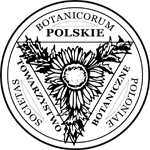Abstract
Morphological and anatomical variability in 24 subpopulations of two native species of Festuca occurring in Poland was studied. The principal component analysis and cluster analysis of morphometric data and DNA classified specimens or sub-populations of Festuca into two groups, corresponding to the two species. F. rubra and F. nigrescens are similar to each other in most morphological characters: the number of the florets, the length of the spikelet, the length of the lemma awn, the width and thickness of the leaf, the length of the cauline leaf, the length of hairs in the leaf, the number and diameter of vascular bundles in the leaf, the hairiness of branches of the panicle, the hairiness of the lemma. The key morphological features distinguishing both species include the number of ribs in the leaf, the width of the cauline leaf (second from the top), caespitose, presence of rhizomes and quantity of the sclerenchymatous tissue in the leaf blade. Apparent differences were detected between the single sub-populations. However, between the intraspecific sub-populations, diversity in terms of the following traits was observed: the length of the stems, number of florets in the spikelet, the length of the spikelet and lemma awn, the width of the cauline leaves, the number of the ribs and quantity of the sclerenchymatous tissue in the leaf blade.
Keywords
ecotype; Festuca rubra; F. nigrescens; morphological; anatomical; variability






